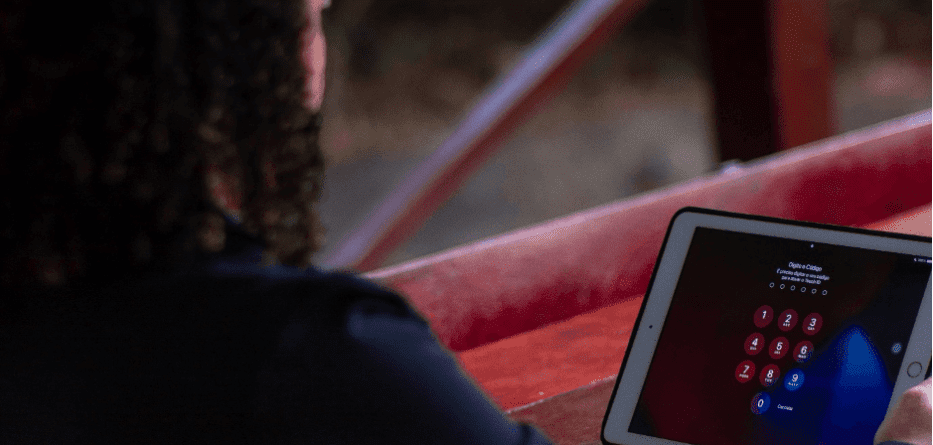Consider that our smartphones contain far more information about us. It knows who your contacts and acquaintances are, Captures Glimpses Of Our Life through images and videos, understands where you’ve been and where you’re going, your surfing habits, your banking transactions, and your shopping habits; it knows almost everything about you.
But how safe is your smartphone against eavesdroppers and cybercriminals? I hope your privacy is protected by a security mechanism on your electronic device.
Surprisingly, nearly one-third of smartphone users do not even attempt to safeguard their devices with the most basic 4-digit passcode. Now there’s a security breach you should never commit.
There are currently a variety of techniques to secure and unlock our phones, including face scans, fingerprints, irises, passcodes, and patterns. Which items are safer than the others? Which should you utilize? Continue reading, and let’s address each one individually.
Contents
Simple Patterns
In place of a code, a password, or a PIN, Android users can unlock their phone with a pattern password. However, this is the least secure method of locking your phone.
In a report published in the Sessions of the Annual Computer Security Applications Conference, researchers discovered that when participants viewed a video of someone entering a pattern to unlock their phone only once, they might repeat it after memorizing it 70% of the time.
This increased to 80% if the individual viewed the video more times. The study duplicated the widespread password-copying technique known as shoulder-surfing, in which an attacker surreptitiously observes a user entering their password.
The authors hypothesize that graphic patterns are more straightforward to memorize than random integers. However, if you must employ a design, there are techniques you may apply to ensure its security, such as beginning from different points.
“Most insecure are patterns. And there is a phenomenon known as selection bias. According to Maximilian Golla, a security researcher at the Max Planck Institute for Security and Privacy, “it has been noticed, for instance, that users always start from the top left corner, which helps an attacker estimate the correct pattern.”
Face Unlocking
Nowadays, the majority of smartphones come with facial recognition technology. Consequently, the phone can be unlocked simply by gazing at it. The process is quicker than iris or fingerprint unlocking without compromising security.
Unfortunately, the 2-D form of this biometric security device is simple to defeat. Mobile devices like Samsung Galaxy S8 have tested and demonstrated this flaw. To trick 2-D facial unlocking systems, all a would-be hacker truly needs is a photo of the phone’s user.
Please use fingerprint scans, passcodes, or eight-node pattern unlocking instead of 2-D facial recognition if your phone has that option.
This takes us to 3-D facial scanning, which is used in Apple’s Face ID and other more secure facial recognition systems.
Face Recognition

Face ID represents the next generation of facial recognition technology. Face ID, unlike Samsung’s method, detects depth and tracks the face in three dimensions.
Multiple new sensors are crammed inside the iPhone X’s upper display notch, including an infrared camera, dot projector, and a flood illuminator for facial depth scanning.
Together, these sensors flood your face with thirty thousand invisible dots that track your face in three dimensions and then build a pattern that is safely recorded on the iPhone. Each time you glance at your phone, the face recognition algorithm matches your appearance to what it sees.
Apple stated that the odds of someone fooling Face ID are one in a million, which is substantially superior to TouchID’s odds of one in 50,000. Face ID is also clever enough to accommodate everyday user changes. It can still monitor your face even if you alter your hairdo, grow a beard, or wear hats and scarves.
Iris Scanner
Because our irises are more distinctive than our fingerprints, iris scanning is considered the most secure type of biometric authentication. Some Samsung Galaxy devices feature the technology, although scanning an iris can take longer because the user must stare directly at the sensor. Consequently, it is the most secure biometric authentication method available.
Samsung has begun integrating iris detection and 3D facial recognition to make unlocking your phone more convenient. Intelligent Scan, for instance, scans your iris in low-light conditions if it cannot recognize your face, and it scans your face in high-light conditions if it cannot identify your irises.
Fingerprint
Since Apple’s Touch ID was introduced, fingerprint scanners have been deemed more secure than passcodes. Apple asserts that there is a one in 50,000 possibility that another individual’s fingerprint can trick Touch ID.
Since biometric fingerprint systems are presently used to unlock phones, authenticate apps, and make payments, their security is crucial.
Though security researchers have been able to lift a fingerprint and create latex duplicates to trick Touch ID, this is a very sophisticated operation that the standard user should not be concerned about. However, fingerprint scanners remain superior to passcodes and pattern unlocks as security measures.
If you ask me
As for your device’s most secure protection approach, providing a precise response is difficult because everyone’s circumstances are unique. However, if you are neither Adele nor Timothee chalamet, your fingerprint sensor or iris scanner is likely the superior security mechanism for the time being, if only to reduce the likelihood that someone could guess your password or watch you input it. As previously said, neither biometric nor non-biometric security methods are foolproof, so all we can do is work with what we have, being careful and acutely aware of each security method’s limits and watching as they improve over time.








